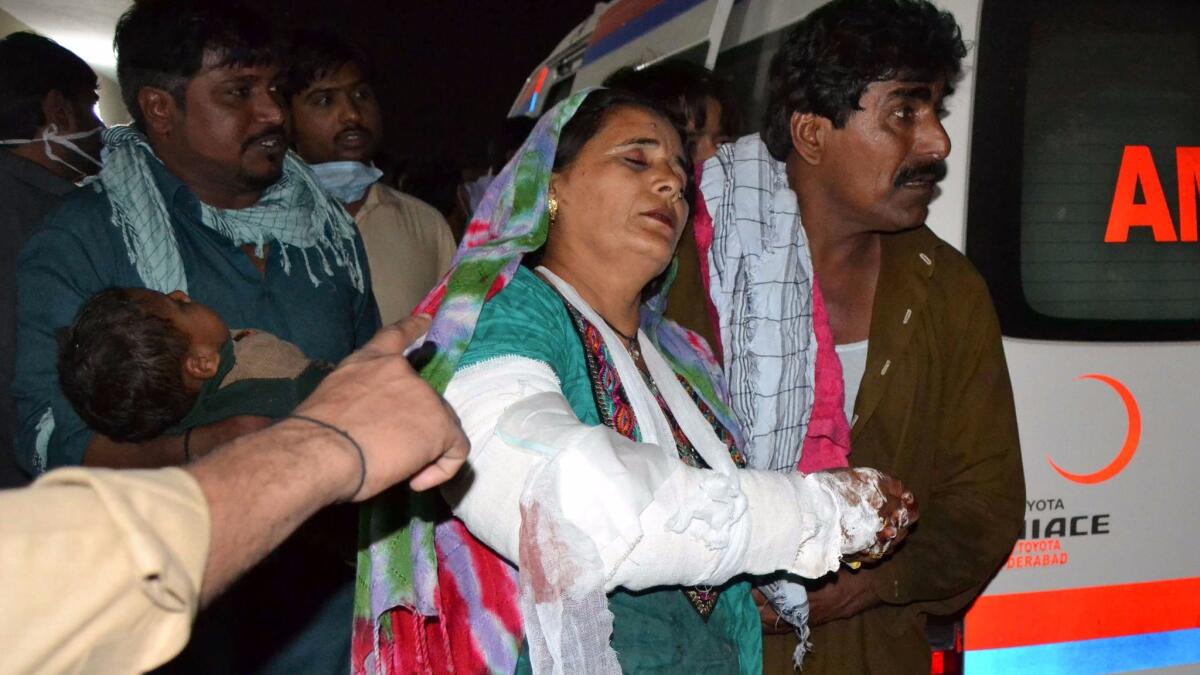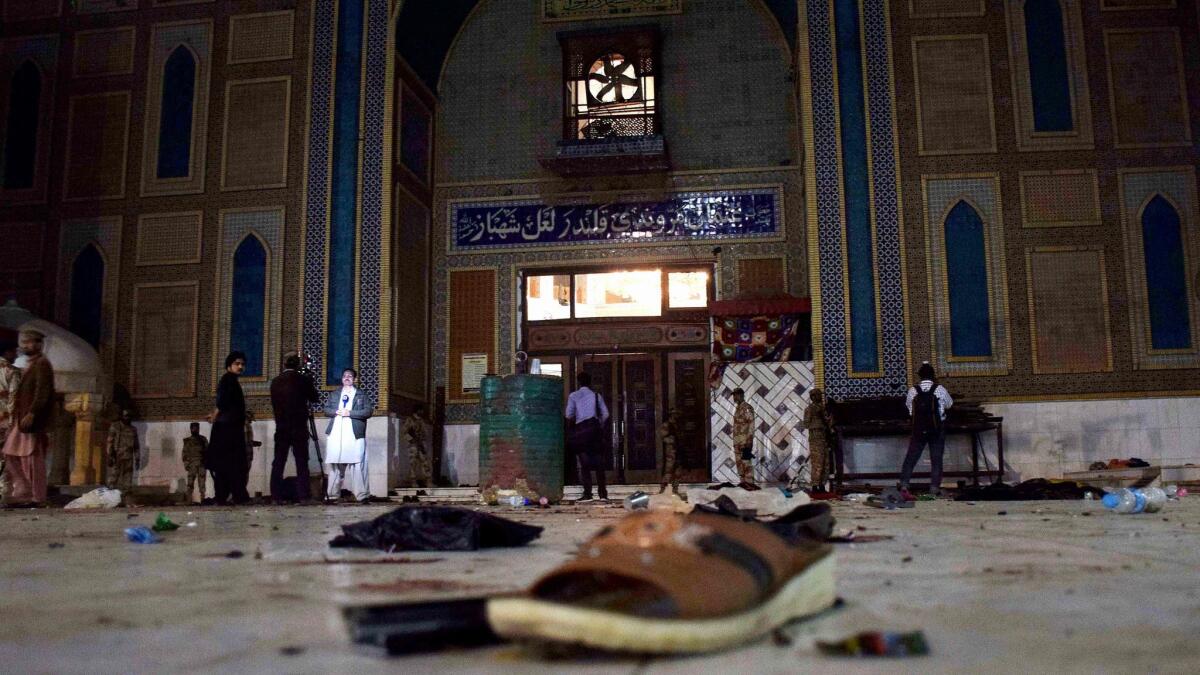Islamic State claims responsibility for blast that kills more than 70 at Sufi shrine in Pakistan

Reporting from Islamabad, Pakistan — A massive suicide bomb ripped through a revered Sufi shrine in southern Pakistan on Thursday, killing at least 72 people and wounding more than 250 in one of the deadliest terrorist attacks in Pakistan in years, police officials said.
The blast occurred as devotees gathered for a dhamal, a dancing ritual central to the mystical Sufi tradition of Islam, at a renowned shrine about 100 miles north of the southern city of Karachi.
Witnesses said that at least 500 devotees were inside the shrine when an explosion occurred as they were performing the ritual.
Khadim Hussain Rind, a senior police official in Sindh province, said that 72 people were killed and 50 more were in critical condition.
The South Asian affiliate of Islamic State, the militant organization based in Iraq and Syria, claimed responsibility for the bombing in a message to news media. It was the latest in a series of attacks claimed by the Sunni militant group against smaller religious sects and traditions in Afghanistan and Pakistan.

The shrine to Lal Shahbaz Qalandar, a 13th-century Sufi preacher, is located in the town of Sehwan Sharif, dozens of miles from the nearest hospital, in a remote, hilly region with few ambulances. The scene was chaotic as the Pakistani army dispatched C-130 cargo planes and helicopters to ferry the wounded to hospitals, while locals carried bodies away from the blast site in three-wheeled rickshaws, residents said.
“I couldn’t see even a single person without blood,” Raja Somroo, a resident of Sehwan Sharif who entered the shrine after the bombing, said by phone. “There were body parts everywhere.
“Only a few seconds back, they all had been dancing outside. They had come inside to say prayers. There were kids, women, old and young.”
Attendance at the shrine was highest on Thursdays, a fact the assailant had clearly exploited, residents said.
“They attacked our heart and the most sacred shrine in Pakistan,” Somroo said.
Police officials said the attacker entered through the eastern gate of the shrine. They were investigating whether the assailant was a woman, as there was greater damage to the side of the shrine reserved for females.
The Sufi tradition was pivotal in the growth of Islam in modern-day Pakistan, and important Sufi shrines are scattered across the southern belt of the country in Sindh and Punjab provinces. Sufi devotees embrace a personal approach to Islamic belief, which contrasts sharply with the fundamentalism espoused by Islamic State and Taliban militants, who often have targeted members of the group with violence.
In November, Islamic State claimed responsibility for a bombing at a Sufi shrine in the restive southwestern state of Baluchistan, killing more than 50 people.
Prime Minister Nawaz Sharif said in a statement that Thursday’s bombing was an attack on the whole of Pakistan.
“The Sufi people predate Pakistan’s history and played an important part in the struggle for its formation,” Sharif said.
Sindh province until now had been insulated from a wave of terror attacks in Pakistan, including in the eastern city of Lahore and the northern tribal belt. The Pakistani government has blamed militant groups based in neighboring Afghanistan and summoned the Afghan ambassador in Islamabad this week demanding that his government take action against militant sanctuaries.
The countries share a long, porous border including mountainous areas that are home to members of Islamic State in Khorasan, as the group’s South Asia affiliate has dubbed itself. The U.S. military last year stepped up the use of airstrikes against the group’s hideouts in the eastern Afghan province of Nangarhar, which lies on the border with Pakistan.
Special correspondent Ali reported from Peshawar, Pakistan, and special correspondent Sahi from Islamabad. Times staff writer Shashank Bengali contributed to this report from Mumbai, India.
ALSO
Top U.S. general in Afghanistan said thousands more troops needed for fight against Taliban
The elaborate ceremony that says everything you need to know about India-Pakistan tensions
Bomb kills at least 14 at pharmacists’ protest in Lahore, Pakistan, police say
More to Read
Sign up for Essential California
The most important California stories and recommendations in your inbox every morning.
You may occasionally receive promotional content from the Los Angeles Times.










